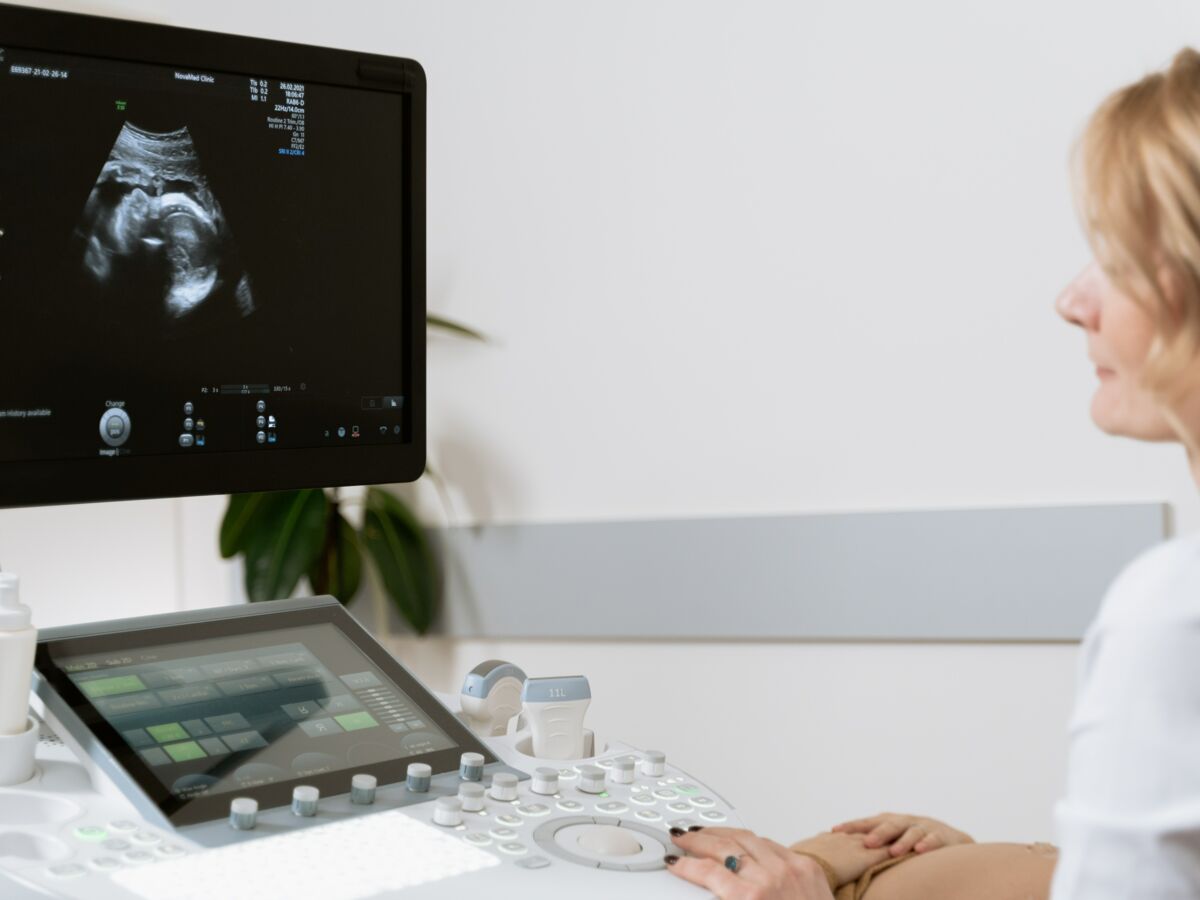What method do sonographers use to determine the sex of the baby? Are we able to interpret the image ourselves?
What is a pregnancy ultrasound?
L’ultrasound of pregnancy, or obstetric ultrasound, is a medical imaging exam allowing you to visualize the fetus and study its development, as well as those of the placenta and the umbilical cord. These examinations can be carried out by ultrasound doctorsobstetrician-gynecologists, or midwives, in private practice or in hospital.
Three main obstetric ultrasounds are offered to all future mothers during their pregnancy. The first is done between the eleventh and thirteenth weeks of amenorrhea, to date the pregnancy precisely and take measurements.
The second ultrasound is called ultrasound morphological, because all of the baby’s organs are carefully observed. It is carried out around 22 weeks of amenorrhea. The growth of the child, but also the location of the placenta and the amniotic liquid are also checked. It is also during this examination that we can discover the sex of her babyfor sure.
The third and final ultrasound is done around 32 weeks of amenorrhea. It makes it possible to ensure that the fetus is still growing well, to check the position of the placenta, the quantity of fluid, and to estimate the baby’s weight at birth, with a margin of error of 15%.
Other ultrasounds may be offered by doctors at other times during pregnancy, such as a so-called ultrasound. early datingduring the first trimester of pregnancy, to ensure that the pregnancy is viable and to be able to date it, or even ultrasounds to monitor growth.
When and how is the sex of the baby determined by ultrasound?
First of all, you should know that there is no visible morphological difference between girls and boys before 10 weeks of amenorrhea. They all have the same genital tuberclewhich will later transform into different genitalia.
It is possible to have a first idea of the sex of your child during the first trimester ultrasound, especially if it is carried out rather late, around 13 or 14 weeks of amenorrhea (however, it is not recommended to do it later, because measures must be taken before 14 weeks of amenorrhea).
The sonographer then places the probe at a precise angle (the strict sagittal plane), and looks at the position of the genital tubercle in relation to the back of the fetus. He can, on his device, draw a line between the tangent to the lumbosacral plane, and the tangent to the ventral face of the genital bud. If the two lines do not intersect, it would be a girl, and otherwise a boy. There are a few more errors when announcing a girl than a boy, in this term.
But it is generally during thesecond trimester ultrasound of pregnancy that the information is revealed, if the parents wish to know it. At this stage, if the baby agrees to uncross his legs, the genitals are visible on ultrasound, and recognizable, even by some parents. We therefore clearly recognize a penis and testicles, or a vulva. The reliability is then close to 100%.
Is it possible to interpret an ultrasound yourself?
During the first trimester ultrasound, some doctors refuse to interpret the sex of the unborn child, because at this stage, this information is not completely reliable. Is it then possible to try to guess it yourself using certain clues?
This is, in fact, possible, keeping in mind that at this stage of pregnancy, the reliability of this information is not absolute, at approximately 80%, and even only 40% at 11 weeks d. ‘amenorrhea. To do this, you must already identify the genital bud of the fetusa small white line which is located at the level of the sex of the child.
In certain cases, if the fetus was poorly positioned, or the angle of the ultrasound is not the right one, this bud is not visible, or can be confused with a limb. If it is visible, you must observe its inclination. If it appears to be leaning downward or parallel to the baby’s spine, it could be a girl. On the contrary, if it points towards the sky and forward, the baby could well be a boy.
Sources:
Doctor Romain Guilherme gynecologist, Doctor Aly Abbara gynecologist, Mpedia, May, Charles-Nicolle Maternity Hospital Rouen
Read also :
⋙ Pregnancy ultrasound: when, how often and how is it done?
⋙ Mandatory ultrasounds during pregnancy: what you need to know
⋙ Obstetric ultrasound: when to do it and how is it performed?
